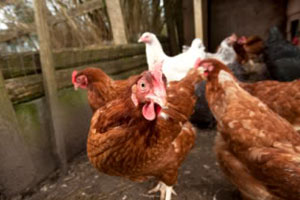Poultry blamed for rise in human H5N1 cases in Egypt

Preliminary studies suggest no major genetic changes in the H5N1 avian influenza virus in Egypt that would help explain the country’s busiest month ever for human cases, according to a report of the World Health Organization (WHO).
The agency said the spurt of cases is probably explained by increased circulation of the virus in poultry and various other factors, including seasonal ones, and that the risk of community-level spread of the virus remains low.
In its update on “Influenza at the Human-Animal Interface,” the WHO said 18 lab-confirmed H5N1 cases were reported in Egypt from Dec 4 to Jan 6, the most in any single month. Two of the cases had onset in November, with the rest in December. Media reports have cited several more H5N1 cases in Egypt in the past week, including six since Jan 9.
The flurry of cases has triggered some speculation about whether the virus is evolving to become better adapted to humans. Last week the United Nations Food and Agriculture Organization (FAO) said scientists who recently analyzed poultry H5N1 isolates in Egypt found two mutations that are typically associated with adaptation to mammals. But the FAO also said an analysis of two recent human isolates from Egypt showed no major genetic changes.
The WHO report says, “Although all influenza viruses evolve over time, preliminary laboratory investigation has not detected any major genetic changes in the viruses isolated from the patients or animals compared to previously circulating isolates.”
The agency said probable reasons for the surge of cases include increased H5N1 circulation in poultry, lower public awareness of risks in Middle and Upper Egypt, and seasonal factors “such as closer proximity [of people] to poultry and longer survival of the viruses in the environment because of cold.”
The agency said that sporadic cases and small clusters are not unexpected, given the virus’s circulation in poultry.
Source: CIDRAP













